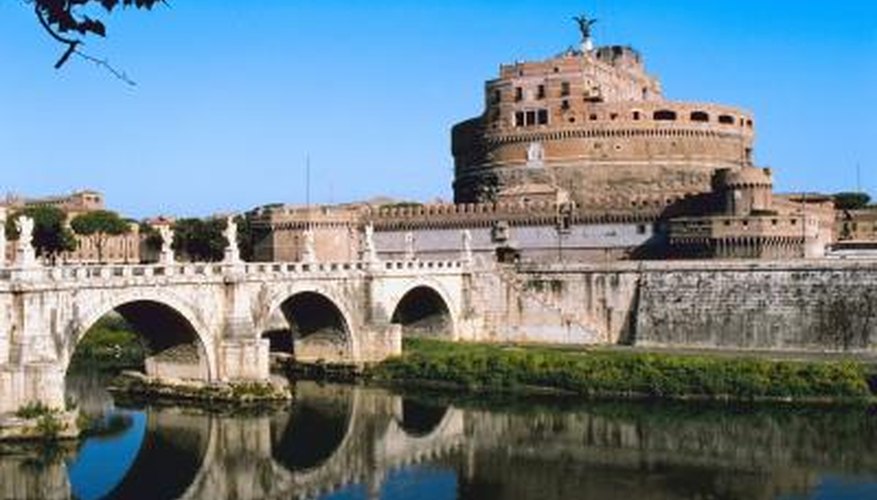People have been building bridges since ancient times. Some of the oldest known stone bridges were built by the Romans. Some of their remains still stand. The Washington State Department of Transportation lists some of the most common bridge types as beam, arch, truss and suspension. Factors that determine which type of bridge to build include cost, location, materials, the distance that the bridge will cover, technical expertise and looks.
Beam

Beam bridges are very basic in design. They feature beams laid across two supports to form a deck. Beam bridges must have the capacity to tolerate compression at the top and tension at the bottom. They offer the builder affordability and ease of construction, thanks to their simplicity. One disadvantage of this type of construction is that beam bridges don't work well for long spans.
- Beam bridges are very basic in design.
- They offer the builder affordability and ease of construction, thanks to their simplicity.
Arch

Arches were commonly used by the Romans to build not only bridges, but also aqueducts and buildings. The arch contributes strength by virtue of its shape. It is possible to design and build an arch bridge in such a way that no single element of the bridge must bear tension. Arch bridges are commonly built with reinforced concrete, which lowers the cost of construction and lends aesthetic appeal. A disadvantage of arch construction is that it requires a greater number of materials, even if the bridge only spans a short distance.
- Arches were commonly used by the Romans to build not only bridges, but also aqueducts and buildings.
- A disadvantage of arch construction is that it requires a greater number of materials, even if the bridge only spans a short distance.
Truss

A truss bridge uses abutments at either end for support. Occasionally piers are used in the middle, depending upon the span. A truss bridge is constructed of interconnected beams that form repeated triangle patterns. The triangle-based structure makes the bridge strong, since the sides of a triangle will not be compromised under pressure. This allows for even weight distribution.The disadvantages of the truss style are its lack of aesthetic appeal, heaviness and cost.
- A truss bridge uses abutments at either end for support.
- The triangle-based structure makes the bridge strong, since the sides of a triangle will not be compromised under pressure.
Suspension

A suspension bridge is literally suspended. It is made up of a deck that is hung from steel wire cables that run between tall towers. Suspension bridges are very strong, thanks to the cables. Their design is pleasing to the eye, and because of the suspension feature, these bridges are suited for use across longer spans. Suspension bridges are more complicated in design than most other common bridge types and are more expensive to build.
- A suspension bridge is literally suspended.
- Suspension bridges are more complicated in design than most other common bridge types and are more expensive to build.
